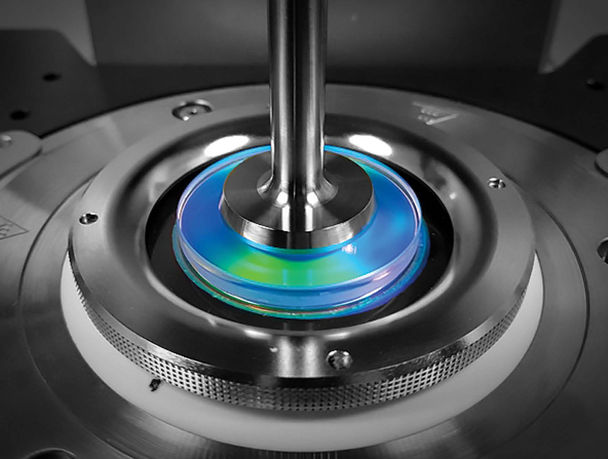Color, Structure, and Rheology of a Bottlebrush Copolymer Solution
Jun 7, 2020

Bottlebrush polymers are materials where a large number of low molecular weight polymers are grafted to a long linear backbone to resemble a molecular bottlebrush. This dense grafting causes a range of interesting physical phenomena to occur. In this effort, the DMREF team has made bottlebrush block polymers; this means that the branches are made from two different types of polymers, and are arranged in two blocks. The chemical dissimilarity between the two blocks allowed the team to observe distinct domains that had spacings on the size associated with visible light (~400 nm). Because of this, the samples showed color to the eye, similar to butterfly’s wings and the pearlescent reflections off the surface of an opal.
Importantly, this nanostructure, and thus the color, could be manipulated simply by shearing the sample. A combination of high-end microscopy, rheology, and neutron scattering was used to show how the shear rate alters the structure and color of these bottlebrush polymers. This has significant implications in practical end-use conditions such as high-throughput printing processes and additive manufacturing, as processing the same materials in slightly different manners can ultimately impact the final materials performance.
